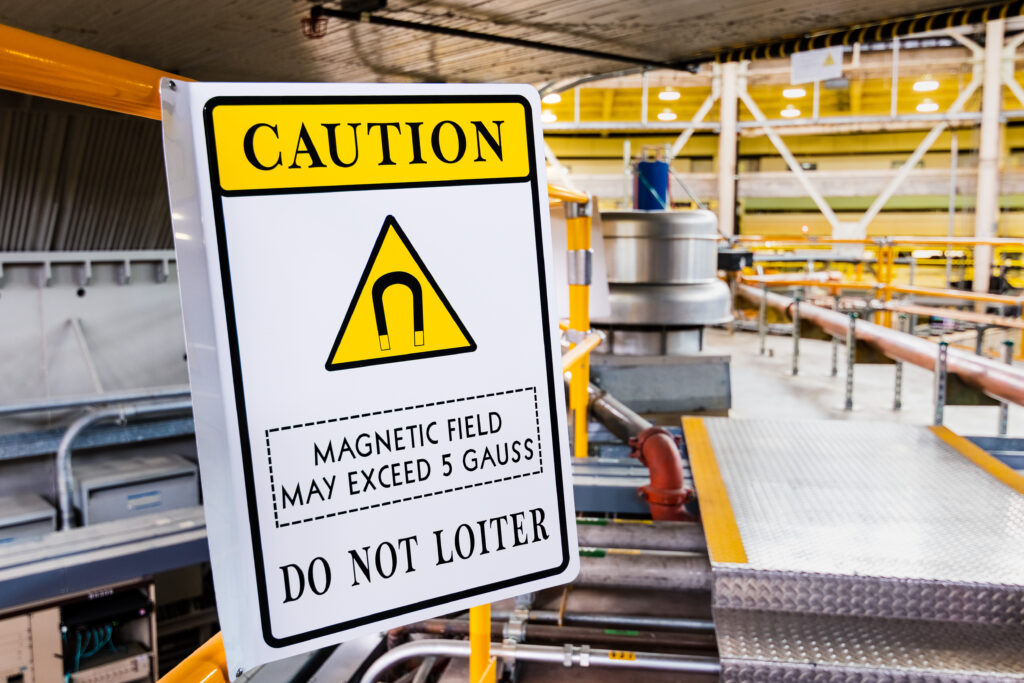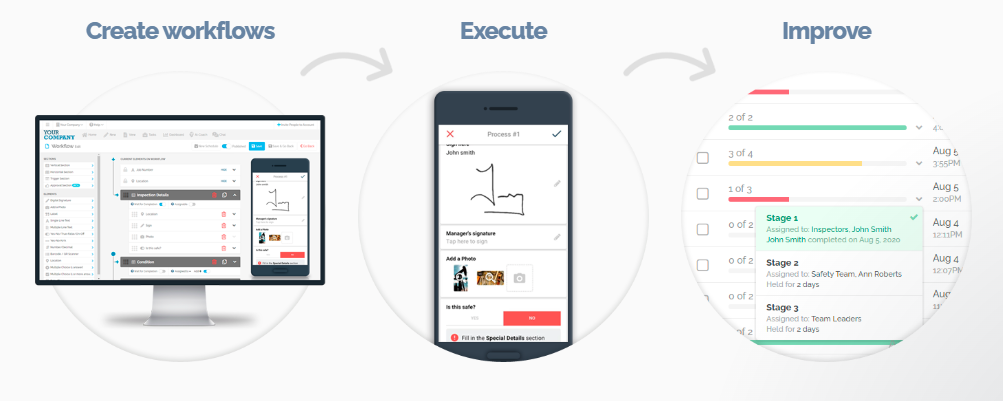“Risk assessment” and “risk management” are often used interchangeably. However, these two terms represent distinct processes that play crucial roles in protecting your business and workers.
In this article, we’ll delve into the differences between risk assessment and risk management, shedding light on their unique functions and why they are essential for effective decision-making and problem-solving.
What is Risk Assessment?
Risk assessment is the initial step in the risk management process. It involves identifying, analyzing, and evaluating potential risks impacting an organization’s objectives or a project’s success. Essentially, it answers the question, “What could go wrong?”
The two key components of risk assessment are:
Identifying Potential Risks
During risk assessment, individuals or teams systematically identify risks by examining internal and external factors that may threaten achieving goals. Such factors include hazards, incidents and near misses.
What is Risk Management

While risk assessment identifies risks, risk management involves mitigating, controlling, and monitoring those risks to reduce their impact and likelihood of occurrence. It involves developing strategies to respond when risks materialize.
Risk Management involves:
Mitigating and Controlling Risks
Risk management strategies may include risk mitigation plans, risk transfer through insurance, risk acceptance, or risk avoidance. The goal is to minimize the adverse effects of identified risks.
Monitoring and Reviewing
Risk management is an ongoing process that requires continuous monitoring and periodic review. As new risks emerge or existing ones evolve, adjustments to the risk management plan may be necessary.
FAT FINGER: A Game-Changer in Risk Assessment and Management
One tool that has been making waves in risk assessment and management is FAT FINGER.
FAT FINGER is a cutting-edge digital tool designed to streamline risk assessment processes with easy-to-build safety workflows that will empower your organization to identify and mitigate risks effectively and minimize potential disruptions.
“Since I discovered SEE Forge, I was impressed with the simplicity and accessibility of the app and knew it would work for any big or small business. Every employee of ours has a mobile phone, so it was easy to incorporate an app on their phone so that when they travel to rural sites or even at the main office/workshop, they are able to conduct pre-shift Take 5s or JHAs. There is huge flexibility within the app, and I look forward to Oleology utilizing this app more within a technology-advancing world.”
–Saasha Callaghan–
Benefits of Using FAT FINGER
- Enhanced Efficiency: FAT FINGER simplifies complex risk assessment tasks with simplified checklists that make the process more efficient.
- Accuracy: This tool minimizes human errors by tracking every possible risk and near miss, ensuring precise risk evaluation, with real benefits for product quality and worker safety

- Real-time Monitoring: FAT FINGER provides real-time data, allowing organizations to respond swiftly to emerging risks.
- Cost Savings: By reducing manual labor and errors, FAT FINGER saves organizations time and money.
- Environmental Compliance: FAT FINGER helps organizations track and manage environmental compliance, reducing the risk of regulatory penalties.
Key Differences between Risk Assessment and Risk Management

Scope and Focus
The primary difference between risk assessment and risk management lies in their scope and focus.
- Risk assessment is about identifying and evaluating risks
- Risk management is about taking action to address those risks.
Timing in the Process
Risk assessment occurs at the beginning of a project or decision-making process. In contrast, risk management is a continuous process that unfolds throughout the project or endeavor.
Responsibility and Accountability
Risk assessment often falls under the purview of subject matter experts or analysts, while risk management involves a broader range of stakeholders.
Risk managers are responsible for implementing risk mitigation strategies and ensuring their effectiveness.
Integration of Risk Assessment and Risk Management
Risk assessment and risk management should work seamlessly together to create optimal results such as:
Seamless Workflow
Effective risk assessment informs risk management strategies and ongoing risk management feeds back into the assessment process.
Enhancing Decision-Making
By integrating risk assessment and risk management, organizations make more informed decisions. This holistic approach ensures that risks are considered from the outset and actively managed throughout the project lifecycle.
Benefits of Effective Risk Assessment

Early Problem Identification
Risk assessment enables organizations to identify potential issues before they escalate, allowing for proactive problem-solving.
Informed Decision-Making
When decision-makers clearly understand potential risks, they can make more informed choices, leading to better outcomes.
Enhanced Project Performance
Effective risk assessment contributes to project success by minimizing unexpected disruptions and delays.
Benefits of Proficient Risk Management
Minimized Impact
Risk management reduces the impact of adverse events, ensuring that they do not derail an organization’s objectives.
Resource Allocation
Efficient allocation of resources ensures that risk management efforts are targeted at the most critical areas.
Common Implementation Pitfalls

It’s worth mentioning these common challenges and Pitfalls that hinder effective implementation of risk assessment and management protocols.
They include:
Overlooking Risks
One common pitfall is the tendency to overlook certain risks,
especially those that may seem unlikely but could have severe consequences.
Underestimating Risks
Another challenge is underestimating the potential impact of risks, leading to inadequate preparation.
Inadequate Resources
without adequate resources, it would be nearly impossible for effective risk management
In Summary: Risk assessment vs Risk management
In conclusion, risk assessment and risk management are two distinct yet interconnected processes crucial for navigating the unpredictable nature of business and projects.
The primary goal of risk assessment is to identify, analyze, and evaluate
potential risks that could impact an organization’s objectives or a project’s success.
Risk assessment identifies and evaluates risks, while risk management involves taking action to mitigate, control, and monitor those risks.
For optimal results, risk assessment and risk management should be conducted simultaneously, with ongoing feedback between the two processes.
Revolutionize risk assessment and risk management with FAT FINGER
FAT FINGER has revolutionized risk assessment and management, providing organizations with efficient, accurate, and real-time solutions.
FAT FINGER is designed to be user-friendly, with an intuitive interface, reducing the learning curve for users.
The drag-and-drop builder makes FAT FINGER customizable, allowing you to tailor risk assessment processes to your industry or business.






